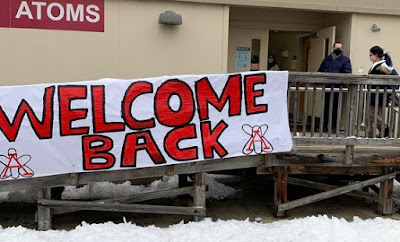Fairfax County schools to return to five days a week of in-person learning in the fall
Fairfax County Public Schools will return to five days a week of in-person learning this fall, Superintendent Scott Brabrand told the school board March 16.
By March 19, more than 109,000 students will have returned for in-person learning, as in-school COVID-19 transmission rates low.
“We have shown that we can return our students and staff to our buildings in a way that is safe and steady,” Brabrand said. “We are confident that we can deliver on a five-day return for all students in the fall, knowing that, while we can adapt to any situation, in-person learning really is the best option for our students and staff.”
Graduation rules
Many high schools have already begun to conduct student activities in-person, including band, dance, and theater, and several schools are planning to phase in more activities as students return to school throughout March.
In a related announcement, Virginia Gov. Ralph Northam released preliminary guidance for graduation ceremonies March 17. Graduation events held outdoors will be capped at 5,000 people or 30 percent of the venue capacity, whichever is less. Indoor graduation ceremonies may have up to 500 people, or 30 percent of the venue capacity, whichever is less.
FCPS mitigation efforts have been extremely effective in limiting COVID transmission in schools with just 19 cases of transmission in schools and offices between Jan. 26 and March 15, Brabrand said. Those cases affected just .02 percent of students and staff in buildings at that time.
Second-quarter data indicated that middle and high school grades have improved overall from the first quarter, he noted.
New grading policy
FCPS will adopt a seriess of grading policy changes to alleviate stress among high school students and will offer greatly expanded summer programming in schools to support both the academic and transitional needs of students.
Elementary and middle schools will host programs focusing on math and literacy in July. High schools will offer credit recovery classes in June, July, and August allowing students to retake classes they failed.
Final exam scores this year will only count if they raise students’ grades. Students will be allowed to choose a “pass” option rather than a letter grade in up to two classes. High school students failing a class will get a “no mark” (NM) grade instead of an F.
“We will continue to focus on three areas: student and staff social-emotional wellness; attendance and engagement with the addition of proactive family communications; and essential academic standards, increased interventions, and tutoring, as we begin to plan to return strong in the fall,” said Brabrand.
Virtual offerings will be “limited” at the start of the next academic year and will probably be restricted to students who must remain virtual for medical reasons.
Brabrand said some of the experiences with online learning could be useful after the pandemic, such as concurrent learning, in which teachers work with in-person and remote students simultaneously.
As FCPS prepares for the five-day return in the fall, it will continue to monitor updated health guidance, will investigate additional PPE resources and safety protocols, continue to analyze the potential for COVID-19 testing, and prepare schools for changing social distancing mandates. The CDC has reduced the social distancing mandate in schools from six feet to three feet.
Equity issues
Brabrand noted that the county’s most vulnerable students – low-income children, English language learners, and students with disabilities – have struggled the most with virtual instruction.
A big challenge for FCPS is persuading families to return. School enrollment dropped by 8,700 students this year – most likely for homeschooling or in-person learning at a private school.
About 53 percent of students prefer to remain virtual, and those numbers are higher among students of color. Just 27 percent of Asian families and 37 percent of Black families are choosing in-person school. That compares to 57 percent of white families and 52 percent of Hispanic families.
“We have an equity imperative to have all of our students back in person in the 2021-22 school year,” Brabrand said. “It’s time to return to normal . . . or as near normal as we can.”

